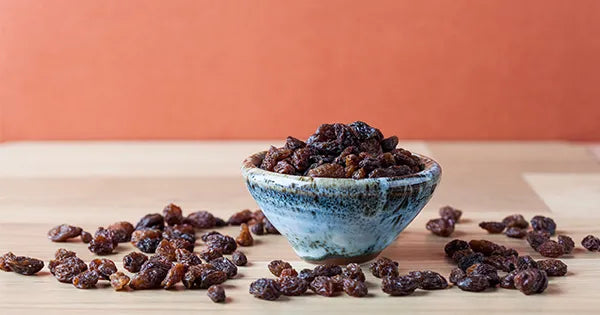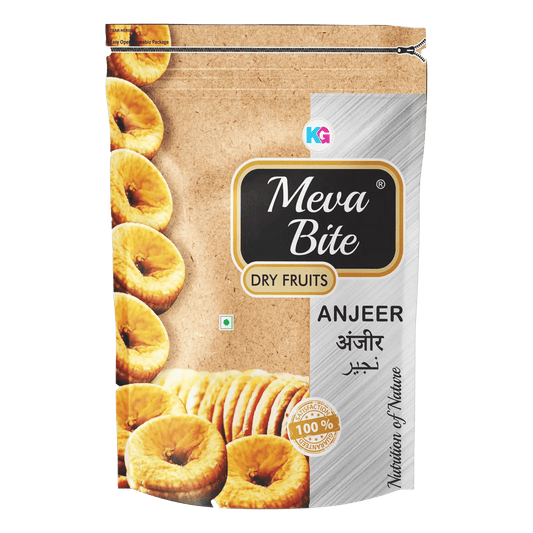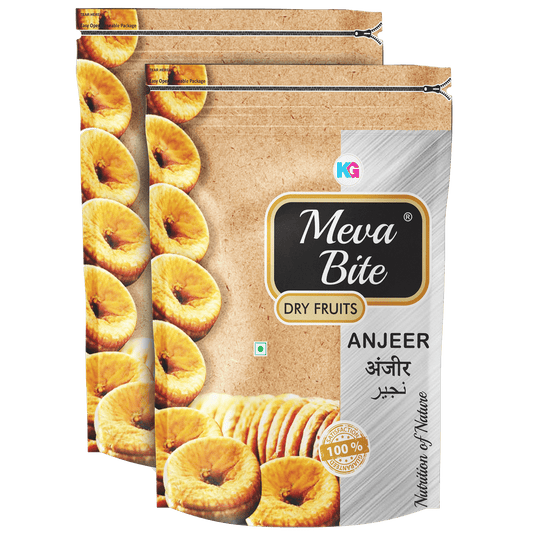All the Things You Need to Know About Shelf Life and Storage
1. Do dried fruits actually expire, or can they last indefinitely if stored properly?
Short answer: Dried fruits can expire, but their shelf life is significantly longer than fresh fruits. While they don't last indefinitely, proper storage can extend their usability for months to years, depending on the type of fruit and storage conditions.
Long answer:
-
Expiration vs. prolonged shelf life:
- Dried fruits do not last indefinitely
- They have a longer shelf life compared to fresh fruits
- Proper storage is key to maximizing longevity
-
Factors affecting shelf life:
- Type of fruit
- Drying method used
- Presence of preservatives
- Storage conditions (temperature, humidity, light exposure)
-
Typical shelf life ranges:
- Unopened packages: 6-12 months
- Opened packages: 1-6 months
- Some dried fruits can last up to 2 years if stored optimally
-
Importance of proper storage:
- Airtight containers
- Cool, dry environment
- Protection from light and heat
-
Quality vs. safety:
- Dried fruits may lose quality over time
- They can remain safe to eat for extended periods if stored correctly
2. What are the signs that dried fruit has gone bad and is no longer safe to eat?
Short answer: Signs of spoiled dried fruit include visible mold, unusual odors, significant discoloration, excessive hardness or softness, crystallization, and the presence of insects or their eggs. Always inspect dried fruits before consumption for these indicators.
Long answer:
- Visual indicators:
- Mold growth (fuzzy patches, usually white or green)
- Discoloration (dark spots or overall color change)
- Crystallization (sugar crystals forming on the surface)
- Texture changes:
- Excessive hardness (fruit becomes too tough to chew)
- Unusual softness or mushiness
- Clumping of pieces that were previously separate
- Odor changes:
- Rancid or off-putting smell
- Fermented or alcoholic odor
- Presence of pests:
- Visible insects or their larvae
- Small holes in the fruit pieces
- Webbing or cocoons in the package
- Moisture-related issues:
- Excessive dryness (fruit becomes brittle)
- Unusual stickiness or dampness
- Taste alterations:
- Bitter or unpleasant flavor
- Loss of characteristic sweetness
- Packaging concerns:
- Damaged or improperly sealed packaging
- Bulging or swollen packages
3. How long can I typically expect different types of dried fruits to stay fresh before they potentially spoil?
Short answer: The shelf life of dried fruits varies by type, but generally ranges from 6 months to 2 years when stored properly. Factors such as moisture content, preservatives, and storage conditions can affect longevity.
Long answer:
| Dried Fruit Type | Unopened Shelf Life | Opened Shelf Life |
|---|---|---|
| Raisins | 6-12 months | 6 months |
| Dates | 6-12 months | 6 months |
| Figs | 6-12 months | 6 months |
| Apricots | 6-12 months | 6 months |
| Prunes | 12 months | 6 months |
| Cranberries | 6-12 months | 6 months |
| Goji berries | 12-24 months | 6-12 months |
| Dried cherries | 6-12 months | 6 months |
| Dried blueberries | 6-12 months | 6 months |
| Dried mango | 6-12 months | 6 months |
Note: These are general guidelines. Actual shelf life may vary based on storage conditions and preservatives used.
4. Are there specific storage methods that can help extend the shelf life of dried fruits at home?
Short answer: To extend the shelf life of dried fruits, store them in airtight containers in a cool, dry place away from direct sunlight. Refrigeration or freezing can further prolong freshness, especially in humid climates.
Long answer:
-
Airtight containers:
- Use glass jars, plastic containers with tight-fitting lids, or resealable bags
- Remove as much air as possible before sealing
- Prevents moisture and pests from entering
-
Temperature control:
- Store at room temperature (60-70°F or 15-21°C) for short-term storage
- Refrigerate (32-40°F or 0-4°C) for medium-term storage
- Freeze (0°F or -18°C) for long-term storage
-
Humidity management:
- Keep in a dry environment (relative humidity below 60%)
- Use desiccant packets in storage containers for added moisture protection
-
Light protection:
- Store in opaque containers or in a dark pantry
- Avoid direct sunlight exposure
-
Portion control:
- Divide bulk purchases into smaller portions for storage
- Minimizes exposure to air and contaminants
-
Vacuum sealing:
- Removes air and creates an airtight seal
- Particularly effective for long-term storage
-
Freezer storage tips:
- Double-bag or use freezer-safe containers
- Label with date and contents
- Thaw at room temperature before use
5. Can I store opened packages of dried fruit for as long as unopened ones, or do they spoil faster?
Short answer: Opened packages of dried fruit generally have a shorter shelf life than unopened ones due to exposure to air and potential contaminants. While unopened packages can last 6-12 months, opened ones typically last 1-6 months when stored properly.
Long answer:
-
Shelf life comparison:
- Unopened packages: 6-12 months on average
- Opened packages: 1-6 months on average
-
Factors affecting opened package shelf life:
- Exposure to air (oxidation)
- Introduction of moisture
- Potential contamination from handling
-
Storage methods for opened packages:
- Transfer to airtight containers
- Remove excess air before sealing
- Store in a cool, dry place
-
Refrigeration benefits:
- Can extend shelf life of opened packages
- Particularly useful in humid climates
-
Freezing option:
- Ideal for long-term storage of opened packages
- Maintains quality for up to 12 months
-
Monitoring for spoilage:
- Check regularly for signs of deterioration
- Use within recommended timeframe for best quality
-
Portioning strategy:
- Divide large opened packages into smaller portions
- Minimize exposure to air and contaminants
6. If I buy dried fruit in bulk, are there any special considerations for storage to prevent spoilage?
Short answer: When storing bulk dried fruit, divide it into smaller portions, use airtight containers, and consider freezing for long-term storage. This approach minimizes air exposure, prevents moisture absorption, and maintains quality over time.
Long answer:
-
-
Freezing options:
- Ideal for long-term storage (up to 12 months)
- Use freezer-safe containers or double-bagged freezer bags
- Label with contents and date
-
Rotation system:
- Implement a first-in, first-out (FIFO) system
- Use older portions before newer ones
-
Moisture control:
- Add food-grade desiccant packets to storage containers
- Particularly important in humid climates
-
Temperature management:
- Store in a cool, dry place (pantry or basement)
- Consider refrigeration for medium-term storage
-
Pest prevention:
- Inspect bulk purchases for signs of infestation before storage
- Use airtight containers to prevent pest access
-
Quality checks:
- Regularly inspect stored portions for signs of spoilage
- Discard any questionable fruit
7. Is it safe to consume dried fruit that's past its "best before" date, or should I always discard it?
Short answer: Dried fruit past its "best before" date is often safe to consume if it shows no signs of spoilage. This date indicates peak quality rather than safety. Always inspect the fruit for mold, off-odors, or texture changes before eating.
Long answer:
-
Understanding "best before" dates:
- Indicates peak quality, not safety
- Not an expiration date
- Based on optimal storage conditions
-
Factors to consider:
- Storage conditions since purchase
- Visual appearance of the fruit
- Odor and texture
-
Safety assessment:
- Inspect for signs of spoilage (mold, discoloration, off-odors)
- If no signs are present, it's likely safe to consume
-
Quality considerations:
- Taste and texture may deteriorate over time
- Nutritional value may decrease slightly
-
Time frames:
- Dried fruit can often be consumed 6-12 months past the "best before" date if stored properly
- Longer periods may be possible with optimal storage
-
Individual judgment:
- Use your senses to evaluate the fruit
- When in doubt, discard for safety
-
Storage tips to extend quality:
- Keep in airtight containers
- Store in a cool, dry place
- Consider refrigeration or freezing for longer-term storage
- Can expired dried fruit make me sick, or is it just a matter of taste and quality decline?
Short answer: Consuming truly expired dried fruit can potentially make you sick due to mold growth or bacterial contamination. However, dried fruit past its "best before" date, if properly stored and showing no signs of spoilage, is more likely to experience quality decline rather than pose health risks.
Long answer:
-
Potential health risks:
- Mold growth can produce mycotoxins
- Bacterial contamination may occur if moisture is introduced
- Rancidity in fruits with higher fat content (e.g., dried coconut)
-
Quality decline:
- Loss of flavor and aroma
- Texture changes (hardening or softening)
- Reduced nutritional value
-
Factors influencing safety:
- Storage conditions (temperature, humidity, packaging)
- Presence of preservatives
- Initial quality and processing methods
-
Signs of unsafe dried fruit:
- Visible mold growth
- Off-putting odors
- Unusual discoloration
- Presence of insects or their eggs
-
Low-risk vs. high-risk scenarios:
- Properly stored, intact packages: generally low risk
- Improperly stored or damaged packages: higher risk
-
Consumption guidelines:
- Always inspect before eating
- Trust your senses (sight, smell, touch)
- When in doubt, discard the fruit
-
Preventive measures:
- Store dried fruit properly to maintain quality and safety
- Use within a reasonable timeframe after opening
9. If I notice some mold on a single piece of dried fruit, should I throw out the entire package for safety?
Short answer: If you notice mold on a single piece of dried fruit, it's safest to discard the entire package. Mold can spread microscopically throughout the package, and some molds produce harmful toxins. Prioritize food safety over potential waste.
Long answer:
-
Reasons to discard the entire package:
- Mold can spread invisibly throughout the package
- Some molds produce mycotoxins, which are harmful to health
- Difficulty in determining the extent of contamination
-
Risks of partial removal:
- Visible mold is only part of the fungal structure
- Spores may have spread to other pieces
- Increased risk of consuming contaminated fruit
-
Exceptions to consider:
- Large, very dry individual fruits (e.g., dates) may allow for single-piece removal
- However, this still carries some risk
-
Factors influencing mold growth:
- Moisture content of the fruit
- Storage conditions (temperature, humidity)
- Packaging integrity
-
Prevention strategies:
- Store dried fruit in airtight containers
- Keep in a cool, dry place
- Check packages regularly for signs of moisture or damage
-
Health implications:
- Some molds can cause allergic reactions or respiratory problems
- Certain mycotoxins are linked to long-term health issues
-
Cost vs. safety consideration:
- While discarding the package may seem wasteful, it's the safest option
- Health risks outweigh the cost of replacement
Conclusion:
Dried fruits, while having a longer shelf life than fresh fruits, can indeed expire. Proper storage methods, such as using airtight containers and controlling temperature and humidity, are crucial for maintaining their quality and safety. Always inspect dried fruits for signs of spoilage before consumption, and when in doubt, prioritize safety over potential waste. By following these guidelines, you can enjoy the nutritional benefits and convenience of dried fruits while minimizing the risk of consuming spoiled products.
-
Freezing options:












